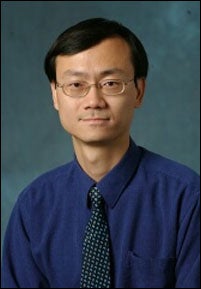CU faculty awarded nearly $2 million to develop 'living wall'
A multidisciplinary team of University of Colorado faculty recently was awarded $1.97 million by the National Science Foundation to develop a "living wall" system based on biomimicry, or the imitation of nature, to slash energy use in buildings.
The novel concept takes its inspiration from thermal regulation systems in the human body, which can efficiently adapt to changes in the surrounding environment through sophisticated heat transfer processes and metabolic adjustments. While conventional walls are built tightly to create a barrier between indoor and outdoor environments, the new wall concept will allow fresh air to enter through a porous polymer medium and to be pre-warmed by solar energy before entering the indoor environment.
Liquid hydrogels would flow through a separate microvascular network within the polymer-based holding material, delivering the heat flow via swelling and contracting according to real-time indoor and outdoor temperature variations and solar conditions.
With such built-in autonomous mechanisms, the "smart" living wall material and system will effectively maintain the envelope structure at minimum or no temperature swing under diverse climatic and operating conditions.
It is expected that such a living wall system can reduce 80 percent to 95 percent of current building energy usage, which is needed for offsetting adverse heat losses and gains through conventional walls and for providing extra ventilation and electrical lighting because of tighter and opaque wall structures.
The research team will be led by CU-Boulder Associate Professor John Zhai of civil, environmental and architectural engineering, who specializes in sustainable building design and the study of indoor environmental quality. CU-Boulder faculty members Jerry Qi and Yifu Ding of mechanical engineering, and Kurt Maute of aerospace engineering sciences, will be involved as co-investigators along with architect Fred Andreas of the University of Colorado Denver.
"The new design and system will substantially revolutionize traditional wall concepts and configurations that primarily focus on conduction mechanisms for wall heat transfer to the environment," Zhai said. "This naturally controlled system will not only significantly reduce the total energy cost required to heat, cool, vent and light the spaces, but also create attractive architectural features."
The team plans to build a prototype of the living wall and study it under a series of thermal and structural loading scenarios, and determine how best to integrate it into current and future building construction under diverse climatic conditions.


